
Dynamic Rockers vs. the Rock Steady Crew
The Wild True Story of the B-Boy Battle Between Dynamic Rockers & the Rock Steady Crew
By Alec Banks
Published Thu, May 14, 2020 at 7:22 PM EDT
The seedlings for what would become one of the most important battles in breaking history — between the Dynamic Rockers and the Rock Steady Crew — were forged inside a roller rink in Queens, New York, called United Skates of America.
At the time, there were 3,500 rinks nationwide. New York City had a few large, older rinks in the outer boroughs, and one or two small operations in Manhattan, like the Metropolis Roller Rink at 241 West 55th Street and High Roller at 617 West 57th Street.
But the real belle of the ball was United Skates of America, the country’s largest roller rink chain, which built an elaborate spot with a $100,000 lighting system in the Jackson Heights section of Queens.
United Skates was fertile ground for youth culture at the time. Teenagers would gather to skate and dance to the sounds of DJ Baby J, whose elevated setup in the middle of the room gave him a unique vantage point over the entire space. There was a concession area, dance floor, and inevitably, the Rock Steady Crew and Dynamic Rockers mean-mugging each other on opposite sides.
“We didn’t spend much time there, but the time that we spent there was super critical to the continuation — I guess the rebirth — of breaking,” says Rock Steady president Richard “Crazy Legs” Colón.
“Although I had never stopped — and quite a few other people didn’t stop — it was a place where a new genesis was happening.”
According to Crazy Legs, by the early ’80s, b-boy culture was in dire need of a jolt to the system. Pioneering dancers had ridden the Hip-Hop wave throughout much of the ’70s — often turning disco joints into places to do headspins and windmills — but the “newness” of the style had seemingly already peaked.
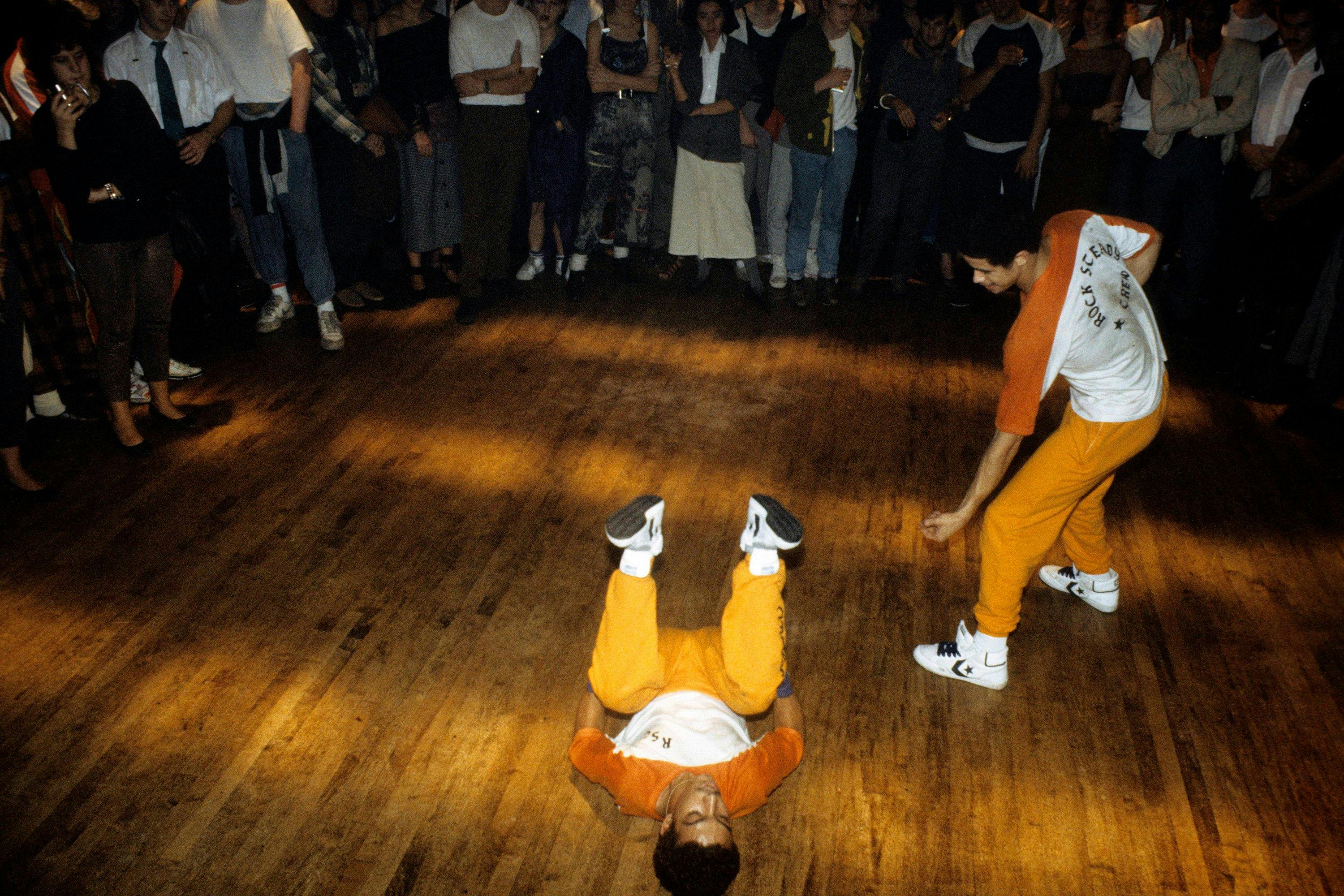
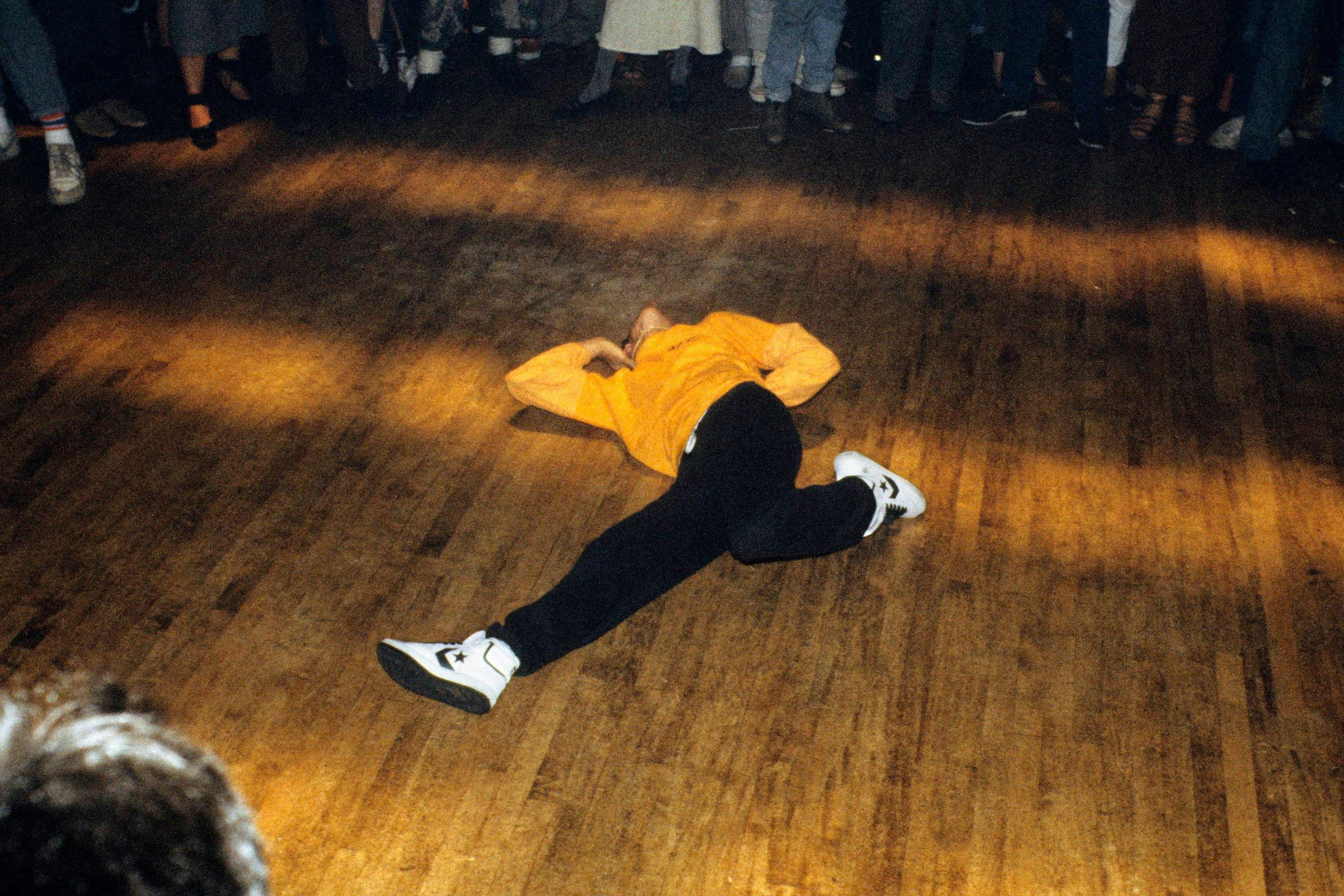
The Rock Steady Crew / Photo by Kerstin Rodgers/Redfern
Much in the same way that Grandmaster Flash and Afrika Bambaataa carried the torch when critics thought Hip-Hop was a passing fad, the Rock Steady Crew was unwilling to let the sound of roller-skate wheels drown out the smack of bodies jostling on the floor.
While a battle might suggest ill will between the Bronx/Manhattan-based Rock Steady and the Queens-based Dynamic, Crazy Legs was adamant that competition was good for the health of the culture. His crew had gotten so good that they often had to split up into smaller internal factions like the Break Masters to challenge one another. At one point they even helped the Dynamic Rockers improve their own moves to breed better competitive spirit.
“I always said if you don’t have competition — or if you’re not in competition — you don’t know if you’re whack, mediocre, or anything,” Crazy Legs says.
“And more importantly, you’re not really keeping anything alive without people to see you. So how are you really dope, or how are you really the best if you’ve never battled someone?”
A Rock Steady membership at the time wasn’t necessarily contingent on having breakdancing skills. While the primary showcase was indeed the theatrics one associates with the New York City-born art form, peripheral members were self-professed MCs, DJs, stick-up kids, roller skaters, and a whole lot more.
“Every crew is a street crew, but our crew also consisted of people who did different things but were still part of the Rock City fam,” Crazy Legs says.
In June of 1981, Rock Steady and Dynamic agreed to meet at United Skates of America. It wasn’t something the rink knew about; what the rival crews had in mind was closer to an Old West gunfight than a Soul Train dance line.
“It was kind of like, ‘Yo, we’ll see you here on this day,’” Crazy Legs recalls. “Boom, that’s it. [Documentarian] Henry Chalfant was also filming Style Wars at the same time. We rolled out that day and were like, ‘All right, cool — let’s smoke these dudes.’” (Footage from the face-off is featured in Chalfant’s classic film.)
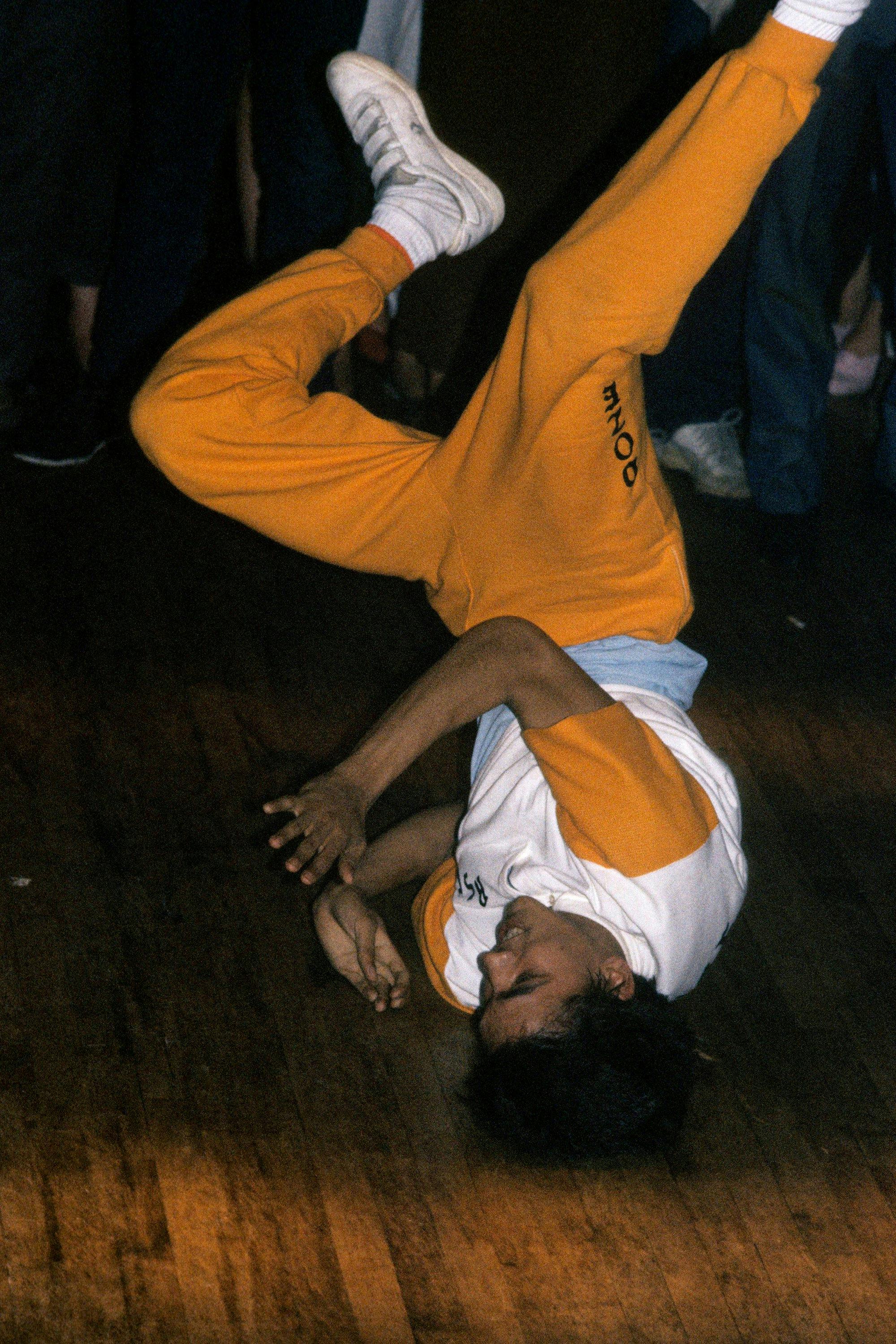
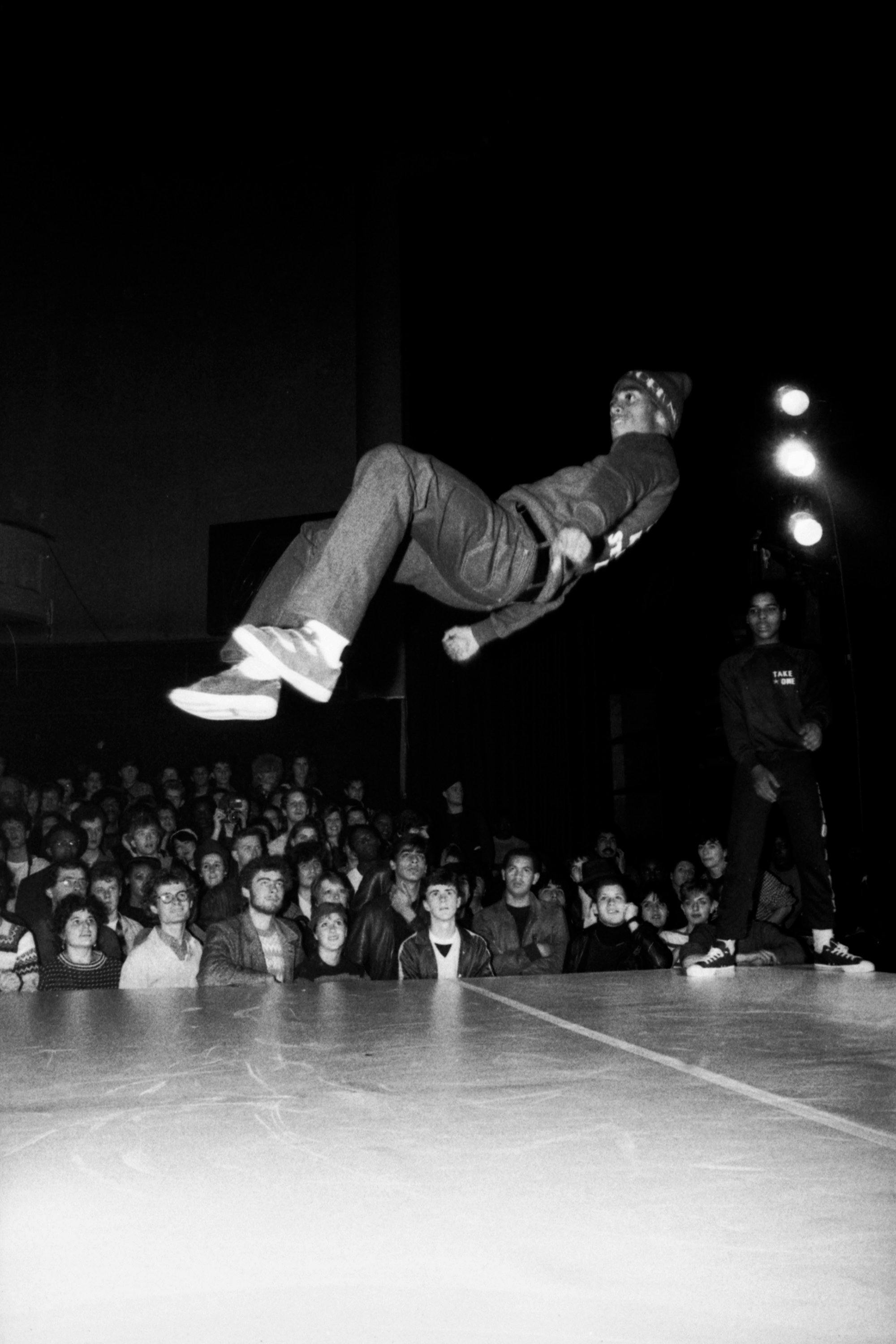
The Rock Steady Crew / Photo by Kerstin Rodgers/Redfern
Wayne 'Frosty Freeze' Frost / Photo by David Corio/Redferns
The one-upmanship was on full display at United Skates of America that day. The crowd was not only audibly struck by the back and forth but also served as de facto judges. When DJ Baby J asked who won, it seemed to be split right down the middle. While a tie wasn’t the desired outcome for either side, Rock Steady saw it as a decisive victory.
“I was like, ‘Fuck that — a tie?!’” Crazy Legs says. “‘How am I going to have a tie in your neighborhood with your crowd?’ That doesn’t even make sense. I felt like we won that shit, because if we were in our neighborhood, there’s no way in hell that we would be coming up with a tie.”
There was still unfinished business between the Rock Steady Crew and the Dynamic Rockers that demanded a more definitive resolution. Luckily, New York City was finally ready to give breakdancing a proper cultural showcase.
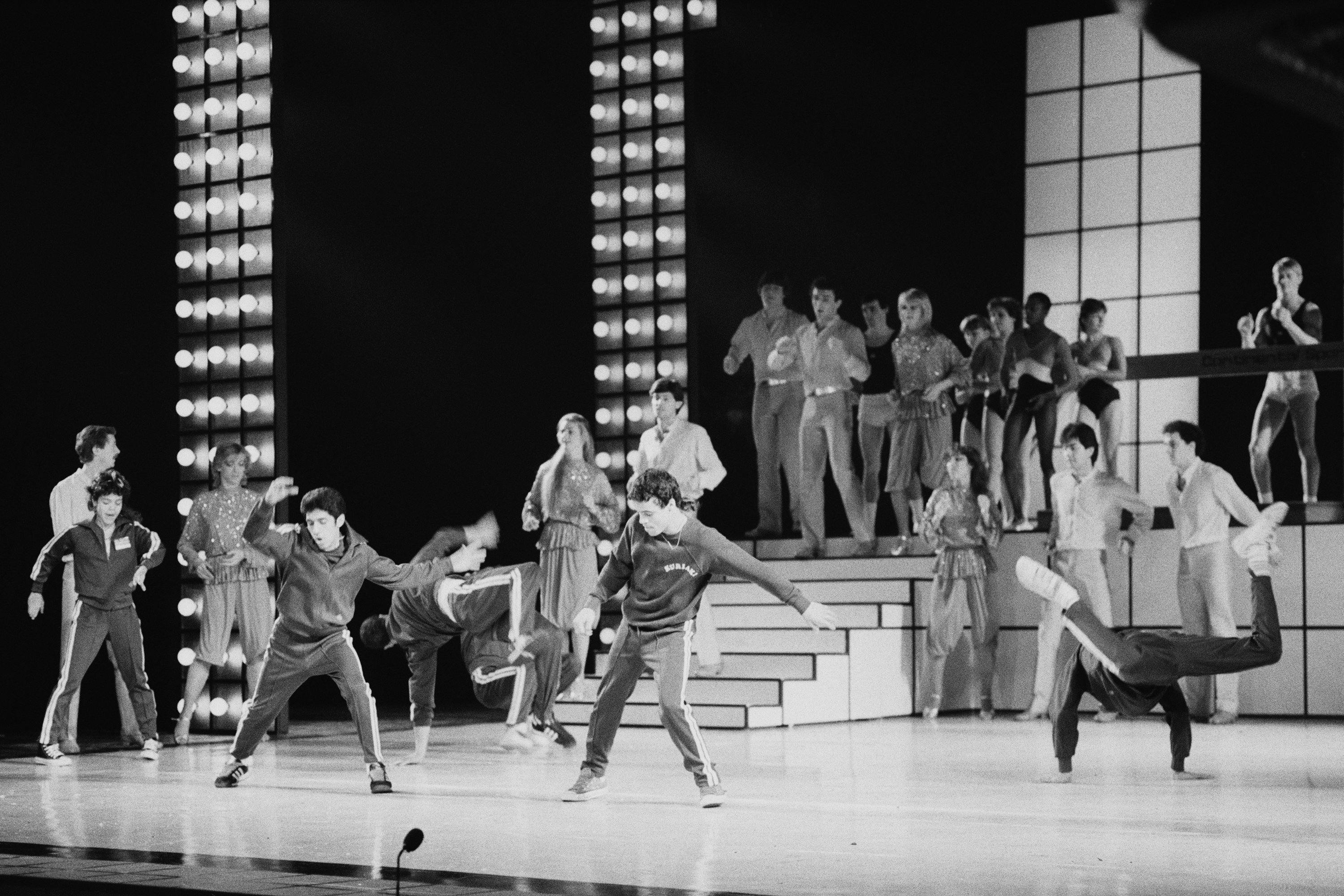
The Rock Steady Crew / Photo By Michael Putland/Getty Images
In 1980, the ninth annual Lincoln Center Out-of-Doors Festival drew 180,000 people and featured a variety of performers, from bluegrass pickers to orchestras to children’s theater groups. The 10th annual festival promised to build on that same cultural momentum.
While much of the media attention was given to some of the more eclectic acts — an all-female Appalachian clog-dance troupe called the Skipback Cindies, for example, who were making their New York City debut — The New York Times did shine a light on something intended for the kids.
“At 2:30 p.m., attention will focus on a new form of competitive dance called ‘breaking,’ in Fountain Plaza,” Nan Robertson wrote on August 14, 1981. “It will feature the Rock Steady Crew against the Dynamic Rockers. The ‘breakers,’ or ‘B boys,’ form rival crews at the playgrounds, discos, and skating rinks where they gather. Their dance consists of a virtuoso series of acrobatic spins culminating in a ‘freeze,’ one of the signature poses invented by each dancer. The Rock Steady Crew is the first group of B boys to become performers.”
The flyer for the event, dubbed “the Battle of Boroughs,” was written in a stylized, graffiti hand style by DOZE — further providing impressionable youth at the time the idea that the various elements of Hip-Hop culture were intertwined.
“I remember the day of the Lincoln Center battle very clearly,” recalled cultural connector Michael Holman on his website. “I remember the atmosphere. There was a lot of excitement in the air. This was unusual, in that this was a public, daytime, out in the open battle that never happened before, and probably has never happened like that since.”
The Rock Steady Crew knew they needed an extra layer of showmanship. Specifically, they saw the power in presenting a united front through their style of dress. At the time, wearing light-blue hospital scrubs had become something of a regional fad.
“We used to call them the doctor suits, and we would put our crew names on them,” Crazy Legs says.
On the day of the battle, the Rock Steady Crew rolled extra deep in their doctor suits. Unbeknownst to them, Henry Chalfant — who figured prominently in organizing the Lincoln Center battle — had not only alerted the Dynamic Rockers to what Rock Steady was wearing but also footed the bill for them to dress in rival battle garb.
“We were pissed at that because Henry was supposed to be our guy,” Crazy Legs says. “We felt like, ‘All right, you motherfuckers are just biters anyway.’”
A large crowd quickly descended upon an elevated stage as DJ Spy started spinning records and RAMMELLZEE began announcing rival dancers from both sides. It was a special time for Crazy Legs. Not only was the performance a huge cultural affair, but he was set to become Rock Steady president in less than a month.
The battle played out in a respectful manner despite the energy emanating from the crowd. One dancer would go, then another dancer would respond as songs like “Apache,” “It’s Just Begun,” and “Give It Up or Turn It Loose” bumped from the system.
“It was so crazy — a portion of the stage collapsed and we still kept battling,” Crazy Legs says.
“Everyone bum-rushed the stage. That meant a lot of people couldn’t see. But the energy in there was ridiculous. Everyone was hype. There was no one fucking with us in a battle and winning back then. We would practice sometimes for six hours a day and more. And no one had to tell us to practice. We were self-disciplined when it came to making sure that by the time we showed up to the next battle we had some new shit to shock everyone’s mind.”
By the time the DJ asked the crowd who won, all anyone could hear was the constant refrain:
“Rock Steady, Rock Steady, Rock Steady!”
Both Chalfant and Holman shot footage that day that would later be used for films like Style Wars and Beat Street, which introduced generations of kids — both in the States and abroad — to this distinctly NYC style of dancing.
“It is the most important battle in Hip-Hop history in my opinion, and I am so proud to have been there and captured it on film,” Holman said.
Brimming with energy from their decisive victory, the Rock Steady Crew began to make their way back to their unofficial dance studio — Happy Warrior Playground, at West 98th Street and Amsterdam Avenue. For Crazy Legs it was an enduring memory, watching hot dog stands get tipped over and listening to the constant screech after someone pulled the emergency brakes on the train. However, this joy would turn out to be temporary.
* Banner Image: Crazy Legs / Photo by Joe Conzo Archives.



